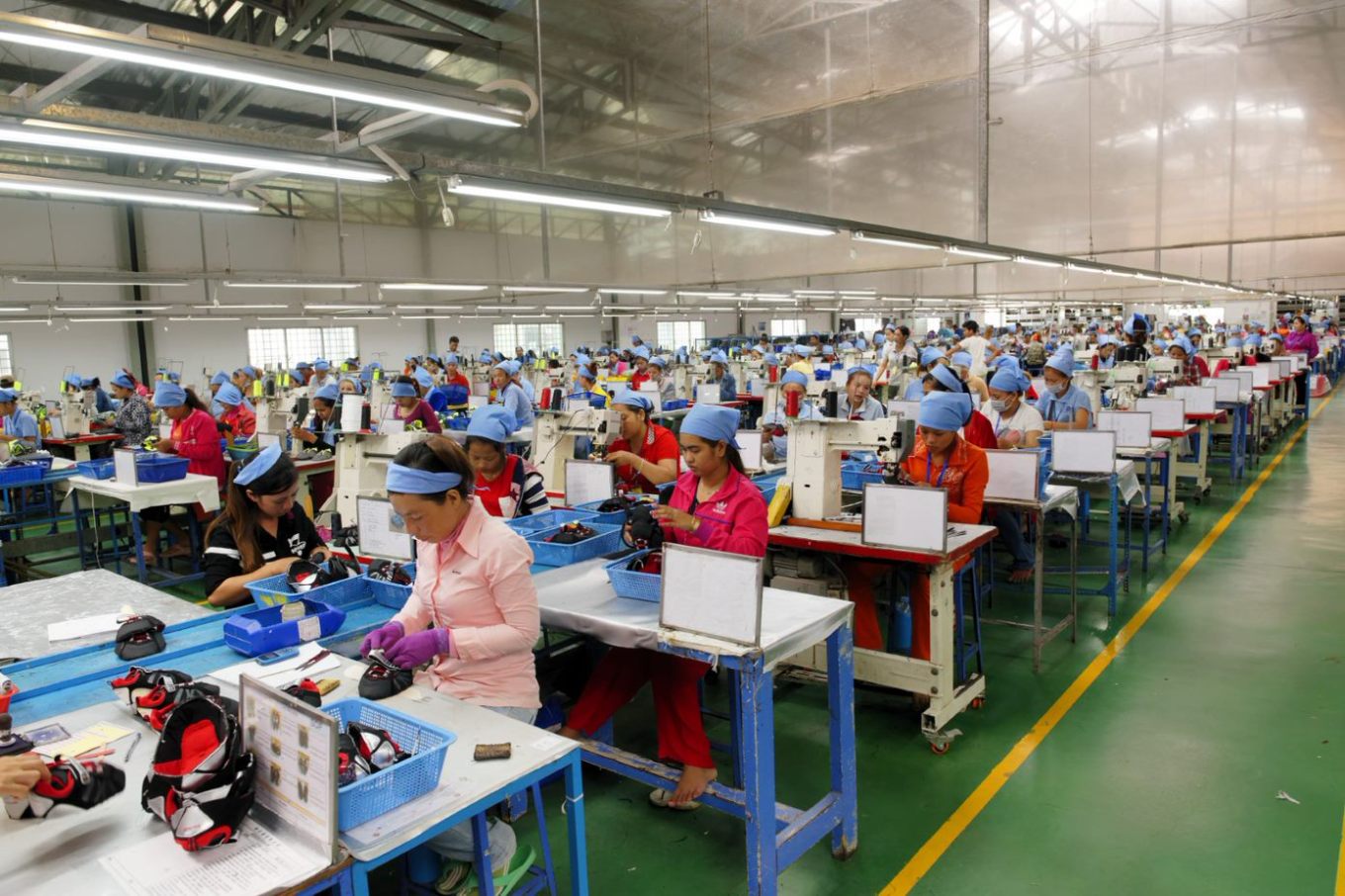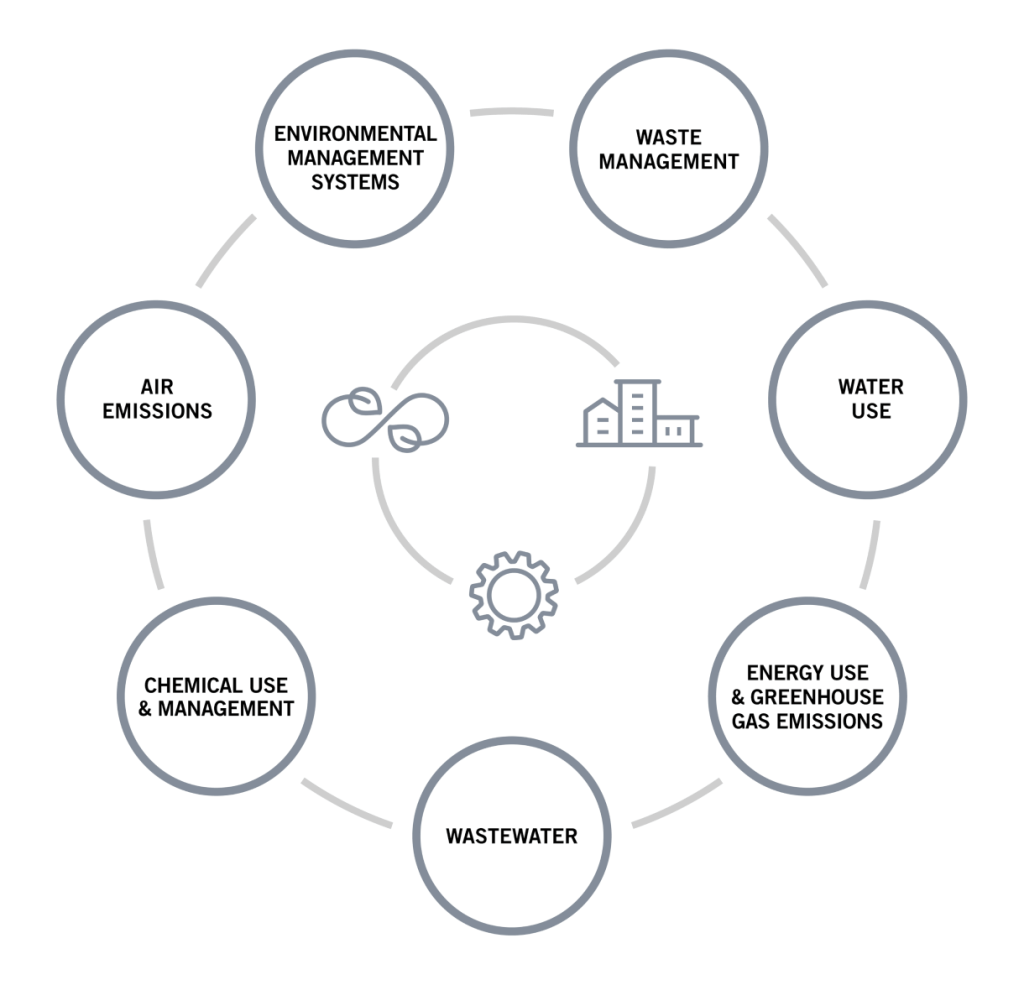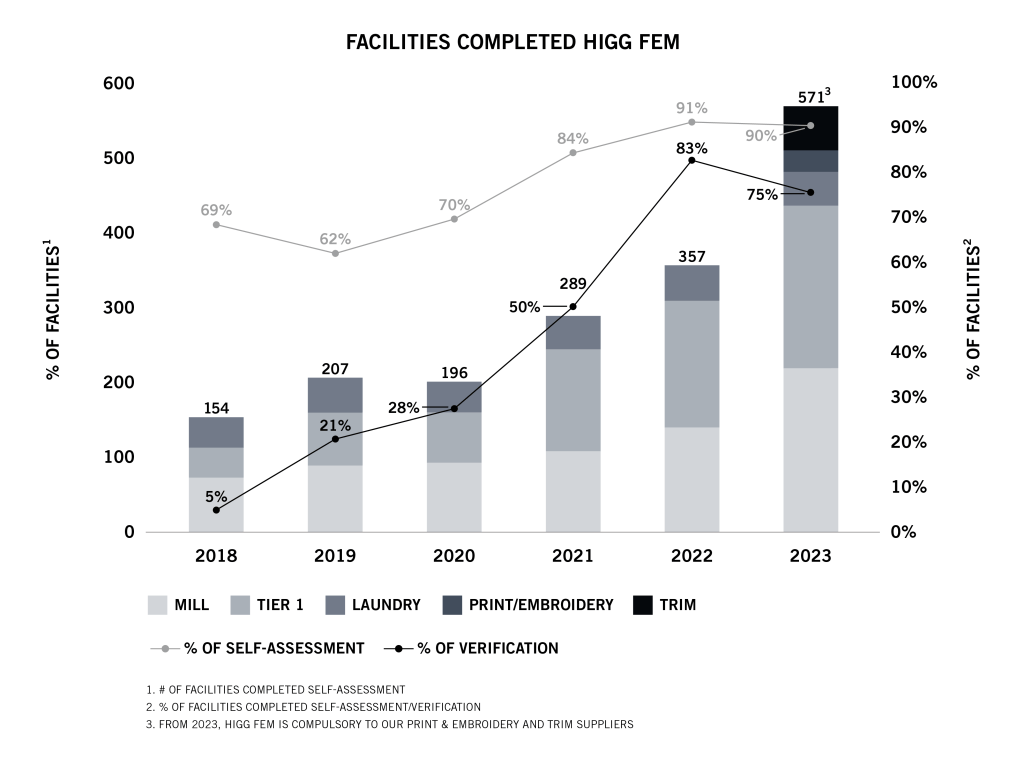
Supply Chain
Across the supply chain, we can minimize the environmental impact of the manufacturing process through environmental compliance, reduce carbon emission and water consumption. This ensures traceability in our supply chain and responsible sourcing of materials aligned with UN Sustainable Development Goals 6 and 12.
Goals
Complete Environmental Self-Assessment Annually: 100% of Tier 1 and Tier 2 Suppliers by 2025
90% of A&F Co. Tier 1 and 2 suppliers completed an environmental self-assessment in calendar year 2023.
Verify Environmental Self-Assessment Annually: 80% of Tier 1 and 2 suppliers by 2025
75% of A&F Co. Tier 1 and 2 suppliers verified their environmental self-assessment in calendar year 2023.
Strategies
Cascale (formally known as Sustainable Apparel Coalition (SAC)) Higg Index

Cascale develops the Higg Index. Abercrombie & Fitch Co. is a member and uses the Higg FEM to measure and improve environmental performance in laundries and mills across seven key areas: environment management systems, air emissions, chemical use and management, wastewater, energy use and greenhouse gas emissions, water use and waste management. The Higg FEM provides facilities with a clear picture of their environmental impacts.
Under the Higg FEM, facilities are scored at three levels: 1, 2 and 3. These signify general thresholds of good, better and best environmental practices. When a facility achieves Level 1, it indicates an “awareness and understanding of sources and systems.”
The Higg Index launched in 2012. Over 21,000 organizations around the world use the Higg Index. A&F Co. started using the Higg FEM in 2012 and became members of Cascale in 2018. The Higg FEM provides a common language and platform to track and measure environmental impact, avoid redundance and facilitate industry collaboration to drive improvement in sustainability.
Cascale officially released the update version of Higg FEM 4.0 in November 2023, which aligns with the key industry standards such as GHG Protocol, Science-Based Targets initiative, and ZDHC. It was also updated to collect more comprehensive environmental data for brands to evaluate and address current challenges. A&F Co. has nominated 17 factories to pilot the Higg FEM 4.0 in August 2023 to provide feedback for launching the new version Higg FEM.
A&F Co. strives to continually reduce the environmental impact of suppliers. The intent of our goal is to ensure suppliers align with industry norm and continuously improve. To help suppliers work towards our goal, the A&F Co. Hong Kong team will support facilities through factory visits, trainings, setting targets, identifying area of improvement across all seven sections and tracking improvement progress through the Performance Improvement Plans.


Measuring Our Progress
In 2023, A&F Co. suppliers average verified Higg FEM score was 62 —an improvement by 48% in compared to 2018. The water and energy scores also increased by 38% and 49% in 2023 compared to 2018. This increase reflects our suppliers’ improvement on their environmental efficiency and efforts on carbon reduction.